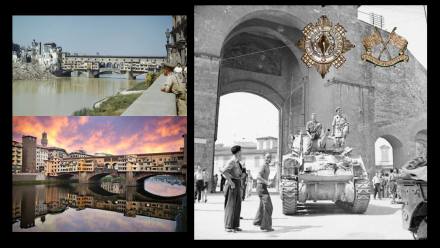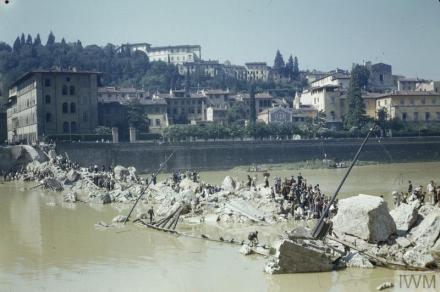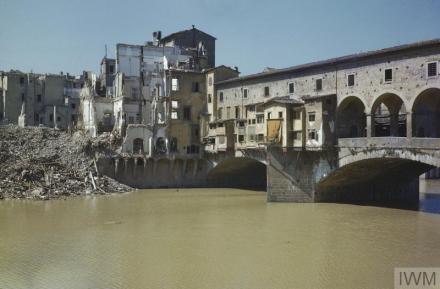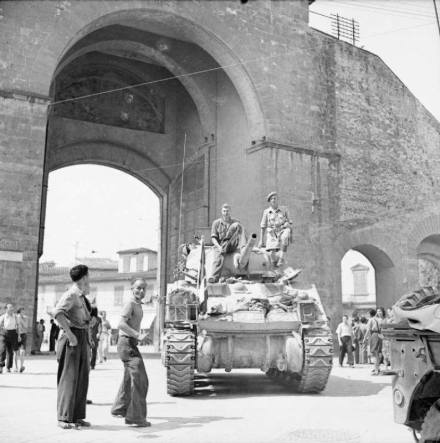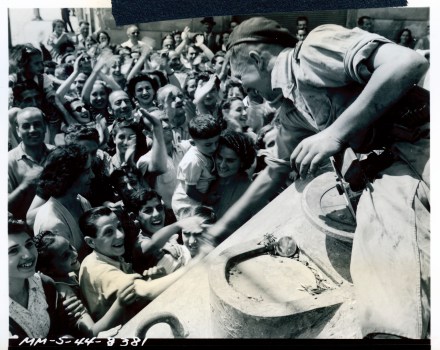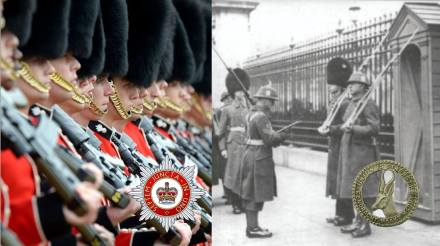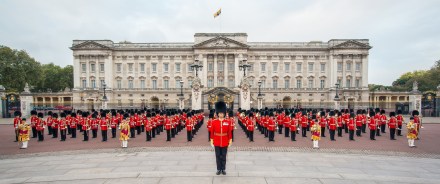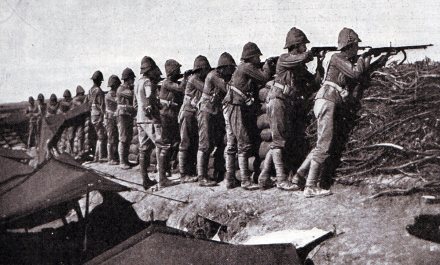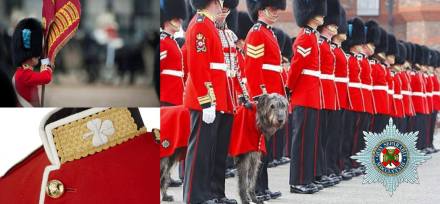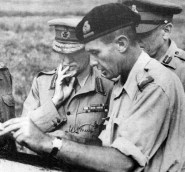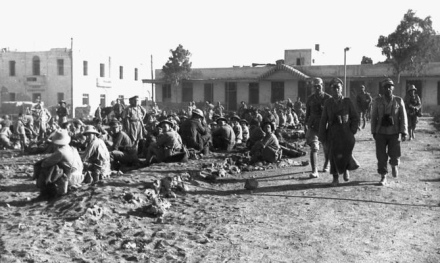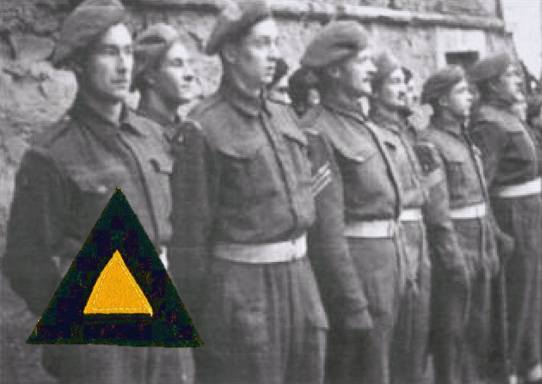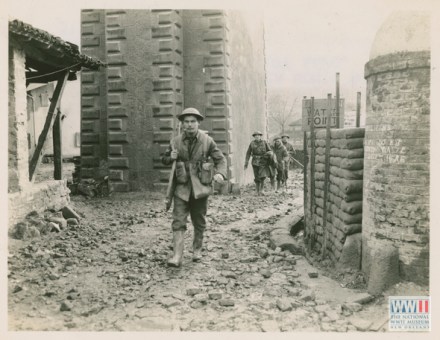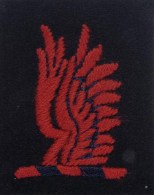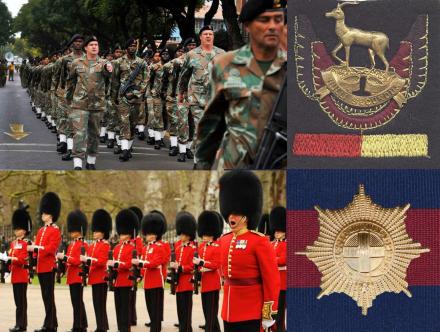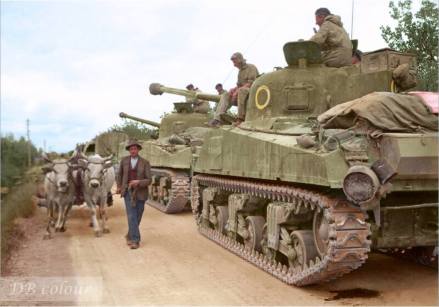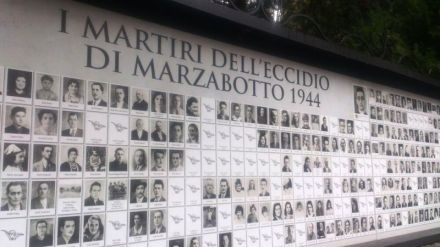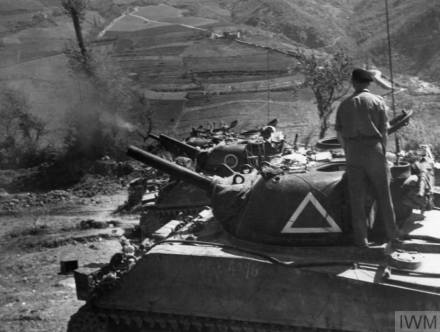 Colin Eglin, the long-time anti-apartheid campaigner and long-time leader of the opposition Democrats in South Africa has recently had a road named after him … but so what! Many streets and roads are named after various politicians in South Africa, especially the anti-apartheid campaigners in recent times … however, this one is different, very different.
Colin Eglin, the long-time anti-apartheid campaigner and long-time leader of the opposition Democrats in South Africa has recently had a road named after him … but so what! Many streets and roads are named after various politicians in South Africa, especially the anti-apartheid campaigners in recent times … however, this one is different, very different.
Why? Because Colin Eglin Road is not in South Africa, it’s in Italy.
Most modern South Africans who can even recall him, just know him as part of the last vestige of ‘white liberals’ in a ‘whites only’ Parliament trying to hold the juggernaut of the National Party and its Apartheid policy to account. A tiny voice calling for full democracy in a sea of National Party (NP) rural ‘afrikaner-bloc’ gerrymandering which overtook him and pushed the ‘official opposition’ i.e. the PFP (now the DA) and the more liberal ‘english-bloc’ urban voters calling for an end to Apartheid into complete political irrelevance.
Note – this gerrymandering (the weighting and re-drawing of constituency boundaries to create a favourable political bias) which the NP used to destroy Colin Eglin and the PFP using the ‘rural bias’ is now happily used by the ANC and this last significant footprint of Apartheid has been put to good effect keeping the DA’s ‘urban’ vote ineffectual.
So, gerrymandering has resulted in well-regarded South African politicians been side-lined – what it did to the ‘democrat’ opposition bench then, it also does to them now. You may now even have to ask ‘Who is Colin Eglin anyway?’ and how is it that Colin Eglin became so revered that the Italians have named one of their roads after him?
That bit has a lot to do with Colin Eglin’s status as a military veteran and his tireless campaigning for South African military veteran recognition and the causes they fought so hard for in the mountains of Italy.

Now, who even knew Colin Eglin was a 2nd World War veteran? Let’s examine what drove this most complex war veteran turned political campaigner.
Background
Colin Wells Eglin was born on 14th April 1925 in Sea Point, Cape Town, at a young age he moved to live with his aunt, outside Hobhouse, Eastern Free State when his father died after a long illness. Colin attended the Hobhouse School where he was the only English–speaking pupil – “I found myself the only rooinek (red neck, or English-speaker) in the village school.” he later lamented and he very quickly came to learn of the ‘Afrikaner politics’ and tension between the National Party supporters of DF Malan and those of Barry Hertzog – politics which began to deeply affect him. It also him the rare advantage of being fully fluent in both English and Afrikaans.
Colin was a bright and highly intelligent pupil and he left the Orange Free State and attended the De Villiers Graaf High School in Villiersdorp where he matriculated in 1939 at the very young age for a matriculant – only 14 years old.

Colin Eglin during WW2
South Africa had gone to war when Colin matriculated, at 14 years old he was too young to join the army, so in 1940 (now aged just 15) Colin Eglin registered for a Bachelor of Science degree in quantity surveying at the University of Cape Town (UCT). In 1943, now finally at the recruitment age of 18 he interrupted his studies at UCT to fulfil Jan Smuts’ call to go to war, and he voluntarily joined the army.
World War 2
Colin initially became a full-time instructor in the anti-aircraft unit in Cape Town. He was then sent to a similar unit in Egypt and transferred to Italy in 1944 joining the 6th South African Armoured Division fighting in the Italian Apennines around Florence. Now a 19-year-old ‘rookie’ soldier, he was to be baptised in the last significant combat operations of the war and was front and forward in the South African assault on Monte Sole.
Colin Eglin had joined ‘D Company’ of an amalgamated Cape Town Highlanders (CTH) and First City (FC) from Grahamstown unit which had formed a combined regiment for service in the 6th South African Armoured Division.
The Cape Town Highlanders (CTH) and First City (FC), known collectively as ‘FC/CTH’ had just previously acquitted themselves very well under the command of Lt Col. Angus Duncan in the taking of Monte Stanco from strong German positions and at this stage the war had entered a static winter period before the next big push onto Monte Sole.
As Colin had completed four years university study at UCT in quantity surveying it was felt that he had sufficient qualification for ‘Battlefield Intelligence’ and he was put on a course to become ‘D’ Company’s intelligence corporal (the military – then and now – often displays this odd logic for placing individuals civilian qualifications for military needs).
Colin was taken to the ‘Pink House’ near Grizzana, a farm building that was also the operational HQ of ‘C’ Company for a crash course of two weeks training in ‘Battlefield Intelligence’ and then back to D Company.
‘D’ Company had its headquarters in a cluster of farmhouses, named the ‘Foxhole’, on the slopes of the mountain overlooking Grizzana. As it was in the line of fire of enemy positions, ‘Foxhole’ was a tough, cold and miserable posting. Colin found himself in a forward observation post (OP) located at the cemetery at Campiaro. The OP overlooked the town of Vergato which was the centre of the German defences in the area.
In the freezing weather, snow and mud guard duty and patrols by D company in the area were a miserable affair. Patrols were sent out at night, and they almost always hit fierce and lethal contacts with the German defenders. In these patrols and observations Cpl Colin Elgin became adept at map reading and at recognising, and noting, the sounds and sights of warfare.
Much needed ‘Rest and Recuperation’ (R&R) came around every two weeks when ‘D Company’ members would go to nearby Castiglione dei Pepoli, the South African 6th Division HQ was located there and they could shower, get fresh supplies and spend some time relaxing. Known to the South African soldiers as ‘Castig’ the town of Castiglione dei Pepoli was to become a central feature in Colin Eglin’s life for years to come.

The South African 6th Division in the town square of Castiglione dei Pepoli – 1945.
In the valleys around Monte Sole, between the 29th September and 5 October 1944 the Italian resistance kicked into action, this then spurred the defending German forces into an extreme action to control the area. They embarked on massacre, and proceeded to try to wipe out all Italian civilians around Monte Sole – resistance, men, women and children (all of them – it mattered not a jot). The town of Marzabotto alone commemorates the massacre of 770 individuals, mostly the elderly, women and children.
With the static winter period over, by the spring of 1945 the South African 6th Division could advance on Monte Sole. In April 1945 Colin Eglin joined a CTH/FC forward party for a briefing on the assault on Monte Sole by Colonel Angus Duncan.
Colin noted “In a few weeks’ time the Allied spring offensive would commence. The Sixth Armoured Division had been given the task of opening the road to Bologna. To do this, the Twelfth Brigade would have to capture the mountain massif formed by Monte Sole, Caprara and Abelle. The Highlanders had been assigned to capture Monte Sole. Suddenly that mountain we had gazed at all winter from a safe distance was in front of us. Forbidding, frightening, challenging. Casualties were likely to be heavy. Yet there was a sense of pride that our regiment had been chosen for this pivotal battle task, and quiet determination to show we could do it”.
The South African 6th Division attack in Spring 1945 was a two-pronged affair, the Cape Town Highlanders and First City (FC/CTH) were to take Monte Sole – regarded as the most formidable of the German Army defences, and Witwatersrand Rifles/Regiment de la Rey (another amalgamated unit) i.e. WR/DLR were to take Monte Caprara. The idea was to eventually push through and capture the crossings of the River Po and break out into the vallies and plains beyond the mountains.

Looking more like partisans than regulars, a First City/Cape Town Highlanders patrol sets out in the italian Apennines – 1945. SANDF Archive
To prepare for the attack on 15th April 1945, the German defensive positions were bombed from the air and shelled by artillery. In taking Caprara, the WR/DLR suffered heavy casualties right from the start and in desperate fighting which at time even involved hand-to-hand combat, they took the mountain. Counter-attacks by German forces were effectively fought off by the South African tenaciously holding on to their win.
Colin Eglin was assembled at the start-line for FC/CTH attack on Monte Sole at Casa Belvedere (two kilometers from the peak of Monte Sole). He had just celebrated his 20th birthday the day before.
Both ‘C’ and ‘D’ companies of FC/CTH advanced along two farm tracks leading up to the summit on Monte Sole. They re-assembled 800 meters from the crest of Monte Sole. The area was heavily mined by Germans, but despite this the South Africans of C and D company advanced under the command a 20-year-old rookie officer with only 12 days front line combat exposure. 2nd Lt. Gordon Mollett led the charge up the approach with only five men and ‘with total disregard for his life’ wiped out the machine gun posts on the crest of Monte Sole with the loss of one of his men.
So swift was the assault on the German’s position that they were completely unprepared for proper defence or the bayonet charge, and with that 2nd Lt Mollett walked into South African history with a DSO (Distinguished Service Order) for his actions and the rest of C and D companies of the FC/CTH took the crest and won the day.
Preceding the final attack on Monte Sole, Colin Eglin had been tasked to install telephone lines as far up the route as possible. Highly dangerous work, on his way up to Monte Sole the soldier walking just behind him stood on a German anti-personnel Schützenmine 42 mine. Also known as a Schuh mine (shoe mine) it is a simple wooden box with a hinged lid containing a 200-gram block of cast TNT and a ZZ-42 type detonator, and it blew off part of the South African soldiers foot.
Colin applied an emergency field dressing to his wounded comrades foot, administered first aid and called for a stretcher-bearer. Even with the threat of mines now highly apparent Colin and couple of ‘D’ Company platoons continued to press forward to the summit. Colin was able to get to the top and rigged up his field radio under fire, only to have its aerial cut in two by all the shrapnel and bullets flying around, thus rendering it useless. So he scrambled down the mountain to the HQ, it was here that he took in the news of the tragic death of his Commander – Lt Col Angus Duncan. He was killed the foot of Monte Sole when his jeep was blown up.
It is thought that the jeep carrying Lt. Col Duncan hit a mine, while other witness accounts suggest an artillery round fired from a German 88 mm anti-aircraft and anti-tank artillery gun across the valley hit the vehicle.

Officer Commanding First City/Cape Town Highlanders, Lt Col Angus Duncan, addressing his men before the assault on Monte Sole. He was killed shortly after this photograph was taken, while driving to his brigade’s position. SANDF Archive
Many years later in Peter Elliott’s interview with Colin Eglin (then Colin was 88 years old and this was his last visit to Italy), whilst the two of them re-traced the steps of FC/CTH at Monte Sole, Colin recalled how the strain of war impacted two completely different soldiers and comrades, Jan and Peter. Jan was a tough outdoors man, an extrovert and he relished army life prior to the battle. Peter was a indoors man, an introvert who just endured army life out of a sense of duty. During the battle for Monte Sole it was Jan, the extrovert whose nerves snapped, and he had to be withdrawn from battlefield. Colin found Peter, the introvert some time later still in his slit trench. He had been under intense mortar fire during a number of German counter-attacks, but remained resolute. He was exhausted but even cheerful and shouted across at Colin triumphantly, ‘Corporal, we made it!’
Even though the taking of the crest had been swift, the Battle for Monte Sole was heavy and hard going, in all FC/CTH suffered heavy losses – a total of 31 men killed and 78 men wounded. The extent of contribution of the two Regiments to the battle and victory can be seen in the bravery – in all twelve gallantry medals and awards were won.
The capture of Monte Sole by FC/CTH opened up the road to Bologna and beyond the Po Valley, within two short weeks on 2 May 1945, the Germans formally surrendered in Italy. For the South Africans it was effectively war over!

‘D’ Company FC/CTH HQ Melzo, Italy, a week after war ended in May 1945. Colin Eglin is fourth from right, back row.
But a new struggle was emerging for these newly minted war veterans, certainly for Colin Eglin. After the War Colin remained in Italy for nine months, he was stationed at Castiglione dei Pepoli, the town located near Monte Sole remained the South African 6th Armoured Division’s headquarters and it now became a depot and clearing station for the entire division (in fact the main South African military burial ground in Italy is located there). During this period, whilst waiting to be demobilised he undertook extra-mural courses in Archaeology and Town Planning.
The entire event had made an indelible impression on Colin’s soul, it was the Italian Campaign that was to deepen his commitment to democracy and liberty. Monte Sole was a shrine for him as he returned there on many occasions during the next sixty-eight years to stand gazing at the mountain where, as a young man, he quickly became an adult. During these trips he was also to build a lasting relationship with the towns-people of Castiglione dei Pepoli.
A military veteran’s legacy
In his autobiography, “Crossing the Borders of Power – The Memoirs of Colin Eglin,” Colin mentions the discussions that took place among the South African soldiers in 1945, whilst in Italy waiting to be repatriated to South Africa. Colin noted:
“The dominant view was that there should be a memorial, but that this should be a ‘living’ one that served the community, not merely a monumental structure. The servicemen, in overwhelming numbers, volunteered to donate two days’ pay towards what was to become the Red Cross War Memorial Children’s Hospital.”

For more on the Red Cross War Memorial Children Hospital follow this link to the related Observation Post; A war memorial in Cape Town which saves children’s lives
The children’s hospital was to be built as a memorial to those who had contributed by sacrifice, suffering and service in the Second World War, the soldiers felt that children had been the innocent victims of the war and the Red Cross War Memorial Children’s Hospital was devoted to the relief of the suffering of children.
The building of the Children’s Hospital in Cape Town commenced in 1953 under the guidance of the South African Red Cross Society and remains a ‘living war memorial’ helping the most vulnerable of the community – our children – and Colin Eglin was to play a leading role in making it happen.

Colin Eglin speaking at the Red Cross Children’s Hospital in Cape Town on Remembrance Day
During his life-time Colin returned to the Italian Apennines and Castiglione dei Pepoli over ten times. For his work on Remembrance and maintaining the links of this part of Italy with their liberators – South Africa – he was even made an honorary citizen of the town of Grizzana Morandi.
But why was an opposition party leader elevated to such a significant position in Italy and not a government one? We all know the answer to that, as the Nationalist Party had no really sincere intentions on commemorating South Africa’s war against Nazism and Fascism in Italy, before and during the war they had supported the ideals of Nazism and Fascism. They were not going to change their stance on Britain, British Allies, Smuts, World War 2 or even Fascism. So this key task on building on the South African sacrifice in Europe, lest it all be in vain, was left to that part of the South African mainstream party political spectrum which supported Smuts and all the ‘liberals’ who went to war against Nazi Germany – and that part of the party political spectrum in 60’s, 70’s and 80’s was Colin Eglin’s turf.
The political path for Post War veterans
In 1946 Colin returned from the Italian theatre of Military Operations to South Africa, here he picked up where he left off and continued with his studies, graduating the same year with a B.Sc in Quantity Surveying from UCT.
He became involved in civic affairs and started the Pinelands Young People’s Club which helped set up a sister organization in the neighbouring Coloured village of Maitland. In 1951 he became chairman of the Pinelands Civic Association and was elected to the Pinelands town council.
The electoral loss of the Jan Smuts’ United Party in 1948 to the National Party and their Apartheid proposals sent shock waves into South Africa’s war veteran community. The war for liberty and democracy they had conducted overseas in places like Italy, against the same forces of fascism which had now come home to roost in South Africa. This spurred The Torch Commando in the early 1950’s led by Sailor Malan and Colin Eglin as a returning war veteran joined The Torch Commando and started to become very politicised.

The Torch Commando was the first anti-Apartheid mass protest movement, and it was made up of returning war veterans. It was primarily a ‘pro-democracy’ movement and was crushed by the National Party because of the military threat it posed – and it was done by using ‘anti-communist’ legislation designed to curtail any ideology in opposition to Apartheid.
The Torch Commando was linked to the United Party, who tried to leverage it for the ‘service vote’ and wrestle power back from the National Party. In 1953 Colin decided to enter in formal political party opposition to Apartheid in addition to protesting with The Torch Commando – and he joined Smuts’ United Party (Smuts had just passed away in 1950). Almost immediately he became the political campaign manager for his friend Zach de Beer who was the United Party (UP) candidate for the parliamentary seat of Maitland. Colin Eglin and Zach de Beer were to form a friendship and political bond which would transform itself into what is now the modern “Democratic Alliance’, of the two Helen Suzman would say “Zach was clever, but Colin was sounder”.
 In 1954 Colin himself was elected unopposed as the UP provincial councillor for Pinelands. In addition to that, he became chairman of the UP’s Cape Peninsula Council and then in 1958 Eglin became the Peninsula MP.
In 1954 Colin himself was elected unopposed as the UP provincial councillor for Pinelands. In addition to that, he became chairman of the UP’s Cape Peninsula Council and then in 1958 Eglin became the Peninsula MP.
By August 1959, following the United Party’s congress in Bloemfontein, Colin broke from the UP ranks, the new guard in the UP instead of following Smuts’ vision of universal suffrage and holistic reconciliation in South Africa, still humoured the more conservative elements of the party who wanted a limited franchise and some restrictive movements for South Africa’s black migrant working population – a sort of ‘Apartheid Lite’ if you will.
In 1959 this was clearly no longer the direction needed or in any way relevant for liberal and democratic opposition parties in South Africa. Colin was one of UP rebels who issued a declaration of dissent (the others included Zach de Beer and Helen Suzman).

Helen Suzman at a Progressive Party meeting
In November that year he was one of the 11 members of parliament who formed the nucleus of the new Progressive Party (PP). It was a bold move, it would ultimately spell the end of the United Party and the conservative element within it, also by fractionating the official opposition (the UP) it certainly bolstered the National Party. What it did however also do was draw the line in the sand of ‘white politics’ – on the one side, the whites who supported Apartheid and a whites only vote and on the other side whites who did not support Apartheid and wanted a democratic vote for all.
All through this Colin Eglin never wavered from his adherence to liberal, democratic values, he aimed to reform the system from the inside; and by balancing criticism of race discrimination with political pragmatism he sometimes found himself the subject of attack from both black and white communities.
The ANC would argue that by participating in the apartheid political system, no matter what his stance, Eglin helped perpetuate it. Yet by participating Eglin was also able to work against the Apartheid government machine and make important political gestures – such as his visit to the black activist Steve Biko, or sending ‘official government opposition’ delegations to promote the dismantling of Apartheid in the so-called ‘independent’ Bantustan ‘homelands’ and promoted dialogue with urbanised black leadership.
By 1966 Colin Eglin became chairman on the National Executive of the Progressive Party (PP) and in 1971 he became the party leader succeeding Jan Steytler. In an attempt to attract Afrikaners to the PP, he initiated ‘Deurbraak’, the first journal of verligte (enlightened) opinion in South Africa. Colin Eglin also initiated a dialogue between the PP and Black homeland and urban leaders. He was also instrumental in establishing Synthesis, a non-party political study and discussion group, which became an important tool for information and contact across the colour bar. He also held a symposium of 50 Afrikaner academics in 1971, from which a non-party-political movement, Verligte Aksie, was formed.
In 1974 the PP won six seats in the general election with the seventh coming from a by-election a few months later. In 1975 Eglin negotiated the merger with members of the Reform Party, which led to the formation of the Progressive Reform Party (PRP). In 1976 he called an Extraordinary Parliamentary session to discuss the Soweto Uprising and call for the resignation of the Minister of Bantu Affairs, M.C. Botha.
A combination of gerrymandering by the National Party and totalitarian crack-down by the Apartheid State of South Africa’s liberal ‘democratic’ politicians, gagging many of them by way of banning and sending many into exile after the Sharpeville massacre in 1960, saw liberal politics in a racially segregated and conservative Afrikaner biased voting sphere become absolutely irrelevant – and the PP would eventually lose all its seats, except one – Helen Suzman – who remained a lone voice of official opposition to Apartheid in Parliament for many years.
Also for many years, while she was the Progressive’s sole MP, Colin Eglin acted as Helen Suzman’s link with extra-parliamentary activities. He travelled extensively in Africa, Europe, America and even China. During visits to 15 African countries, as official government ‘opposition’ to the National Party he met many heads of state to drive international opposition to Apartheid – and he did this using official and politically legal channels – without having to resort his party to violent opposition.

Criticism of the PRP by the National Party as they tried to brand then as a “Tool of Communist agitators.” was swiftly put in place by Suzman who said .. “it’s really a joke, isn’t it? Because, quite clearly, we are a party of real moderates. It just shows how little they understand.”
In 1977, following a merger with the Committee for United Opposition that had also broken away from the United Party the PRP became the Progressive Federal Party (PFP). By 1979 Colin stepped down as leader in favour of Dr F van Zyl Slabbert and became Shadow Foreign Minister, a post he would hold until 1986.

In 1986 Colin Eglin found himself at the reigns of his party again following the shock resignation of Van Zyl Slabbert from the PFP. Ironically van Zyl Slabbert had one crucial deficiency, which Eglin had in spades – staying power. Eglin, on one occasion described the pursuit of the liberal cause on the stony soil of South Africa as “the politics of the long haul”. And when Slabbert, despairing of making any change to the Apartheid machine quit the leadership in a fiery act of self-implosion it was again to Eglin that his shell-shocked colleagues turned to give the lead.
 He remained party leader until 1988, however he didn’t have the best people skills to sustain this type of leadership. Affectionately known as ‘the Egg’, Colin Eglin had a sharp tongue and bit off many heads. His long-time colleague Helen Suzman admitted that his manner “put off a lot of people. Yet we all came back to “the Egg”, not only because he was a role model for progressives, or because of his intelligence and measured political judgment, but because he was a decent, very warm-hearted man, whom we held in great affection.
He remained party leader until 1988, however he didn’t have the best people skills to sustain this type of leadership. Affectionately known as ‘the Egg’, Colin Eglin had a sharp tongue and bit off many heads. His long-time colleague Helen Suzman admitted that his manner “put off a lot of people. Yet we all came back to “the Egg”, not only because he was a role model for progressives, or because of his intelligence and measured political judgment, but because he was a decent, very warm-hearted man, whom we held in great affection.
In 1988 his old UP friend, a veteran of democratic politics – Zach de Beer, took over from Colin as the newly elected party leader of the PFP. With seismic political changes on the horizon, in 1989 Colin Eglin focused on preparing his party enter into a meaningful role in South Africa’s democratic evolution, to do this he knew he needed other democratic bodies in coalition with the PFP – so he negotiated with the Independent Party and National Democratic Movement to bring together a new opposition to the National Party in parliament.

This resulted in the formation of the Democratic Party (DP) in 1989 and the dissolution of PFP. Colin was subsequently elected chairperson of the DP’s parliamentary caucus, and Zac de Beer took control of the reigns of the DP as leader.
Building Democratic opposition in a new epoch
 In 1991, as the Democratic Party (DP) stalwart, Colin participated in the Convention for a Democratic South Africa (CODESA) and served in its working group. Described by Nelson Mandela as “one of the architects of (South Africa’s) democracy”, Colin Eglin played a leading role in the drafting of the country’s post-apartheid constitution.
In 1991, as the Democratic Party (DP) stalwart, Colin participated in the Convention for a Democratic South Africa (CODESA) and served in its working group. Described by Nelson Mandela as “one of the architects of (South Africa’s) democracy”, Colin Eglin played a leading role in the drafting of the country’s post-apartheid constitution.
It was in CODESA at Kempton Park that Colin came into his own. It has been said that it was as though his life to then had been preparation for just this moment. Much of South Africa’s much praised liberal constitution is due to Colin’s clear grasp of the principles of liberal democracy and the constraints and provisions of those institutions charged with protecting and advancing these.
 Colin’s negotiating prowess was recognised by Joe Slovo in particular and, when an impasse was reached, the two would get together and generally find a way forward and eventually, a worthy constitution was to emerge. His intellect, presence and engaging manner were recognised and respected by all in those crafting the new democratic Constitution and Bill of Rights in the tumultuous years of 1990 to April 1994.
Colin’s negotiating prowess was recognised by Joe Slovo in particular and, when an impasse was reached, the two would get together and generally find a way forward and eventually, a worthy constitution was to emerge. His intellect, presence and engaging manner were recognised and respected by all in those crafting the new democratic Constitution and Bill of Rights in the tumultuous years of 1990 to April 1994.
Colin Eglin continued to serve in the segregated House of Assembly until it was abolished in 1994 after the historic democratic transition and vote in South Africa, and Colin then served in the multi-racial National Assembly as a DP Parliamentarian.
In November 1994, at the end of the first session of South Africa’s first democratic Parliament, a small group of Democratic Party MPs had lunch in Pretoria with President Nelson Mandela to discuss some challenges affecting the new legislature.
On arrival, in the dining room at the official residence, Mandela arranged the seating with this instruction: “Colin, you sit at the head of the table – you are the senior man here in terms of service.”
Mandela was giving recognition to a veteran anti-Apartheid stalwart, a person who had first been elected to Parliament fighting Apartheid tooth and nail some 36 years before this luncheon and a person whose Parliamentarian career would even outlive Nelson Mandela’s own after the luncheon was over. It was some acknowledgement to ‘the Egg’ and South Africa’s democrats and Mandela knew it.
 In 2000, the DP merged with other groups to become the Democratic Alliance (DA), which survives as the current official ‘democratic’ opposition to an African National Congress (ANC) government.
In 2000, the DP merged with other groups to become the Democratic Alliance (DA), which survives as the current official ‘democratic’ opposition to an African National Congress (ANC) government.
Whilst in the DA, Colin turned his attention on the new ‘Nationalists’ in Parliament, where the Afrikaner Nationalists (NP) were his previous foe, the African Nationalists (ANC) were his next. To Eglin – nationalism almost always meant one-upmanship of one nation over that of another, he had learned a bitter lesson in nationalism and all its inherent evils in the freezing hills of Italy in WW2.
His foresight to NP politics then were as applicable to his foresight on ANC politics now. Colin felt that the ANC government should focus almost entirely on decreasing the poverty gap in South Africa – and in so do two things – unleash the forces of enterprise to reduce unemployment and focus government spending on housing and education … and not on self-enrichment – here he felt the flawed ANC driven BEE ‘transformation’ programs only served to transform a ANC political elite to a ‘super-class’ and the ‘under-class’ and poverty-stricken would simply be left behind. He also fought the ANC’s bills and amendments to press freedoms believing them to be “a cover up of corruption, incompetence and nepotism”.
 In one his final speeches, Colin Eglin is nothing short of pure prophesy – consider this when he said “Ironically the (ANC) government’s Black Economic Empowerment policy has contributed to the widening of the (poverty) gap, by creating a new rich elite, often of persons with strong political connections, and by leaving the millions of impoverished out of the empowerment process. These factors are having an impact, turning people away from the values that underpin our constitutional system, and eroding confidence in our democratic institutions. They are driving people towards populism as a cure for their problems. In short, they are undermining our new democracy.”
In one his final speeches, Colin Eglin is nothing short of pure prophesy – consider this when he said “Ironically the (ANC) government’s Black Economic Empowerment policy has contributed to the widening of the (poverty) gap, by creating a new rich elite, often of persons with strong political connections, and by leaving the millions of impoverished out of the empowerment process. These factors are having an impact, turning people away from the values that underpin our constitutional system, and eroding confidence in our democratic institutions. They are driving people towards populism as a cure for their problems. In short, they are undermining our new democracy.”
Colin Eglin retired from the DA and opposition democratic politics in 2004 and in the same year was made an Officer of the Order of the Disa, conferred on him by the Western Cape Provincial Government.
In April 2013, the South African Government conferred the Order of the Baobab, Category II (Silver) on Eglin for serving the country with excellence and for his dedication and courage in standing up for the principles of equality for all South Africans against the unjust laws of the past.
Colin died at 88 years old on the 30 November 2013, his long time wife Joyce had died some years before of cancer in 1997 and he left his new partner Raili, three daughters and five grandsons.
As a leading politician and WW2 veteran of The Cape Town Highlanders (CTH), he was afforded a military funeral with draped coffin and the Guard of Honour was provided by the CTH. This short video captures his life and death and the respect he gained in opposition to the National Party and the ANC alike.
The peaceful road to democracy
Today, there seems to exist an opinion in the new political class in South Africa, that if you did not take up arms to fight ‘the crime of humanity’ that was Apartheid you were somehow derelict in your duty as a South African and somehow complicit in upholding Apartheid instead. This rhetoric is aimed at blaming white people for all of South Africa’s ills and demanding financial reparations from them. It’s an ANC and ECC narrative devised to whip up Populism and cover up their own inadequacies, crime and corruption – and its a narrative which is entirely misplaced.
The truth is that many ‘struggle’ organisations other than the ANC alliance fought against Apartheid, and not all of them had to resort to armed conflict to do so, Desmond Tutu and the Council of Churches, The Black Sash, the Progressive Federal Party, The Torch Commando, The Liberal Party, The National Union of South African Students (NUSAS), the United Democratic Front (UDF), the End Conscription Campaign (ECC), the Council of South African Students (COSAS), Jews for Social Justice, The South African Congress of Democrats, The Federation of South African Women. Temple Israel, The Boycott Movement, The Natal Indian Congress and many many more all worked within the confines of the Republic’s constitution and the law to bring Apartheid to an end.
This included South Africa’s white progressives and democrats – starting with the United Party in 1948 and ending with the Democratic Party in 1994 who felt that the system in the long run could be changed from within if they stuck to it and fought it tooth and nail. Here’s the inconvenient truth – they were correct, in the long haul their work was as effective in removing Apartheid as any armed struggle, if not more so. Bold statement but its the real truth.
The truth of the matter is that an armed struggle did not really end Apartheid, the ballot did. There was no MK led ‘military victory parade’ over defeated SADF/SAP forces – and that’s because there was no military victory. The victory in the end was a moral one, and it was one in which democracy loving white South African’s played a key role – the first time white people were given a proper representative vote since 1948 (without National Party gerrymandering of proportional representation playing any factor whatsoever) occurred in 1992. The ‘white’ electorate calmly, with no overt pressure whatsoever voted Apartheid OUT and voted a full and representative democracy for all South Africans IN – and the did that in the Yes/No referendum of 1992 – two years before the so-called ’94 miracle’ – and they voted for Colin Eglin’s ‘democrats’ and enlightened National Party ‘progressives’ who backed the ‘Yes’ vote by a majority of 70% – that is a truth.
Without this ‘YES’ vote the CODESA negotiations would have been scrapped and South Africa would have continued on its ‘Apartheid’ trajectory – fact. It was white people using the peaceful means of the ballot which ended Apartheid and not the ‘armed struggle’, and they used it within the Apartheid ‘whites only’ parliamentary process – fact. Colin Eglin, Zach de Beer, Helen Suzman and the DP played a key role in this referendum and their life’s work ultimately ended Apartheid – without firing a shot – fact.
Who do you think you are!
If you had to play a game of heritage along the lines of the BBC’s ‘who do you think you are’, the DA’s political pedigree starts with Smuts’ United Party and the war veterans like Colin Eglin who fought for liberty and freedom and returned to South Africa only to become politicised when the National Party came to power in 1948. This is the epicentre of the DA’s beginning, a proud cocktail of the ‘democratic’ fight against Nazism, Fascism Apartheid and Nationalism. Colin Eglin is the ‘golden thread’ that links the DA to its wartime beginning and its modern values.
In July 2018, the townspeople of four villages in the mountains Italian Apennines acknowledged Colin Eglin, for his work in keeping the sacrifice of South African in Italy alive and relevant in South Africa. For his work in creating a living war memorial to the children in South Africa, for his ties and diplomacy with the Italy authorities looking after the South African war dead and keeping their legacy alive in the years of Apartheid’s isolation and for his tireless political work to bring peace and democracy to South Africa.

The unveiling ceremony was attended by Mayors of the surrounding Italian towns in the Apennines where the South Africans fought, Italian Military and Police officials, the South African Ambassador to Italy, and the South African National Defence Force Military Attaché to Italy all attended. In addition, 73 years on, the extreme gratitude of the Italian people (including their modern-day children) to the South Africans is still palatable – and it is all in honour of South African sacrifice and the values of the men who brought liberty to this far-flung part of Italy.
In addition to the named road, the town of Castiglione dei Pepoli has a war museum dedicated to the South African 6th Armoured Division, and a special display is in the museum to Colin Eglin and his long-time association with the town’s remembrance and historical preservation of South Africa’s fight against Nazism and Fascism – in his capacity of a long time South African MP and as a veteran of the Battle of Monte Sole himself.
The South African war museum Castiglione dei Pepoli is a jewel and must visit, to see more visit this link: Castiglione dei Pepol South African war museum

Display dedicated to Colin Eglin at the war museum in Castiglione dei Pepoli, Italy.
In conclusion
The ‘Egg’ literally epitomised the road to democracy in South Africa. A road is anything that connects two points and Colin Eglin Road in Italy connects South Africa with Castiglione dei Pepoli in Italy, and under the title ‘Colin Eglin’ is a description in Italian ‘uomo di pace’ meaning ‘a man of peace’ – and nothing could be more descriptive of Colin Eglin and his politics.
He was a man who had seen war and chose to use peaceful means to fight Afrikaner Nationalism and Apartheid and won, eventually becoming a founding father of South Africa’s democratic constitution – a true democrat in every sense. South Africa now has a strong set of multi-racial democrats in the form of the DA still holding African Nationalism (now in a state of racial reverse) in South Africa to account, and it’s all a result of the road Colin took.
It’s highly appropriate that a road is now named after him where his political journey started, in the midst of the mud, death and misery of Smuts’ war against despot nationalism and the South African sacrifice to rid the world of it – and it really is a very long road which begins in the mountains of Italy and continues to South Africa, even to this very day.

Written and Researched by Peter Dickens
Related Work:
The Torch Commando The Torch Commando led South Africa’s first mass anti-apartheid protests, NOT the ANC!
The White Struggle The ‘White’ armed struggle against Apartheid
Large reference and thanks to Peter Elliott and his article and photographs in the Military History Journal, Vol 16 No 2 – December 2013 ‘FOREVER A PIECE OF SOUTH AFRICA’ A return to the area of Monte Sole in the Italian Apennines By Peter Elliott.
References also include ‘Tony Leon remembers great soldier Colin Eglin’ by Tony Leon Colin Eglin’s speech Presented to the Cape Town Press Club A TRIBUTE TO COLIN EGLIN – HELEN SUZMAN FOUNDATION – Peter Soal , December 2013
My sincere thanks to the curators of the South African Military Museum at Castiglione dei Pepoli for the personal tour, insights and assistance, especially to Mauro Fogacci.




